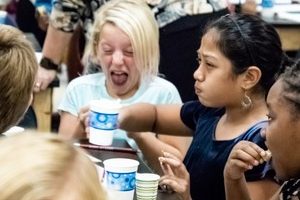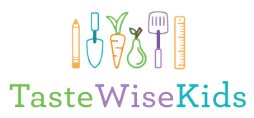The “Sweet Spot”: Taste and the Brain


How do you make a great tasting plate of food? Some of us may rely on the foods that we feel connected to, the ones that elicit fond memories and exciting experiences, some of us go for the boldest flavors, and others may seek the most nutritious foods. Eating is a complex relationship between our emotions and our senses. This article from The New Food Economy questions how the human brain experiences taste by using an experiment quite similar to the activities students do on the first day of Days of Taste, while mapping brain activity. Instead of different areas of our brains responding to sour or sweet, the brain responds in one place-but with different, unique patterns according to flavor.

To our brains, taste is a particular combination of flavor, smell, touch, and sight. We explore this during part of day one of Days of Taste, building a foundation for kids to learn that they can balance food to their preference- making food choices for BOTH good taste and good health.
Students participate in a fun experiment to learn about the elements of taste and how we use our senses to
experience eating food. On a plate are cups of four powders that represent the four elements of taste: sugar for sweet, salt for salty, unsweetened cocoa for bitter, and citric acid (naturally found in fruits like lemons and limes) for sour. As the kids try each one, reactions range from lit up eyes to a puckered face to shouts and squeals (“what is this”?!). The exciting part is up ahead, when the children discover that they can combine and balance these different flavors to their taste. Unexpectedly, bitter + sweet = delicious hot cocoa and sweet + sour = one of their favorite candies, sour patch kids.
experience eating food. On a plate are cups of four powders that represent the four elements of taste: sugar for sweet, salt for salty, unsweetened cocoa for bitter, and citric acid (naturally found in fruits like lemons and limes) for sour. As the kids try each one, reactions range from lit up eyes to a puckered face to shouts and squeals (“what is this”?!). The exciting part is up ahead, when the children discover that they can combine and balance these different flavors to their taste. Unexpectedly, bitter + sweet = delicious hot cocoa and sweet + sour = one of their favorite candies, sour patch kids.

Revealing these tastes in the foods they know and love, and ones they have yet to explore is the role of our Days of Taste chefs , who bring samples of different foods that each have one of the taste elements. The combinations of familiar and sometimes unique foods provide a fresh new way of thinking about food and how different flavors and textures together can make food a whole new sensorial experience-lemons are juicy and tart, radicchio is crunchy, figs are sweet, parmesan is sharp, and sea beans are very salty!
The final experiment our students do on Day 1 tests their perceptions of food and their senses. What happens when you don’t use one of them? Given different colored jellybeans like yellow and red, students identify them with certainty as lemon and cherry or strawberry flavored. Holding their nose closed, they try to guess and see if they are correct. It’s hard to recognize when not using smell but when they open their noses, they may taste buttered popcorn and cinnamon (the tingle feel can be a clue ).
Try this at home:
Your kids (or you!) can be scientists and ‘sensory sleuths’ at home too by doing a version of Day 1. You can get innovative with food you have on hand or try any of these mini experiments:
Your kids (or you!) can be scientists and ‘sensory sleuths’ at home too by doing a version of Day 1. You can get innovative with food you have on hand or try any of these mini experiments:
- Peel and cut up a small piece each of onion, apple, and potato. Have your child hold their nose closed and shut their eyes when they try each one. Do they taste a difference? Try it with eyes open but nose still shut, then try again with everything open. Smell is a major part of how we experience, recognize, and connect with our food, whether it’s freshly baked banana bread or stinky tofu!
- Pour a little bit of clear, flavored (e.g. strawberry) seltzer or sparkling water into 3-5 cups. Add a couple drops of the associated color food coloring (e.g. red) into each cup, increasing the amount of food coloring in each successive cup. Have kids taste each one and describe the difference. Do they think the deeply colored ones have more intense flavor and are sweeter?
- Try a different version of the above flavored water experiment using one flavor, like orange, but using different colors like purple, yellow, the usual orange, and red. Have kids taste each and see if it’s described as something opposite like grape, lemon (this one will be especially tricky!), or cherry. Sight influences our perception of taste, and together with our senses they inform our minds of flavors.
Science is catching up to what we’ve known all along at TasteWise Kids: we use our senses and balance different flavors to make food taste great!
